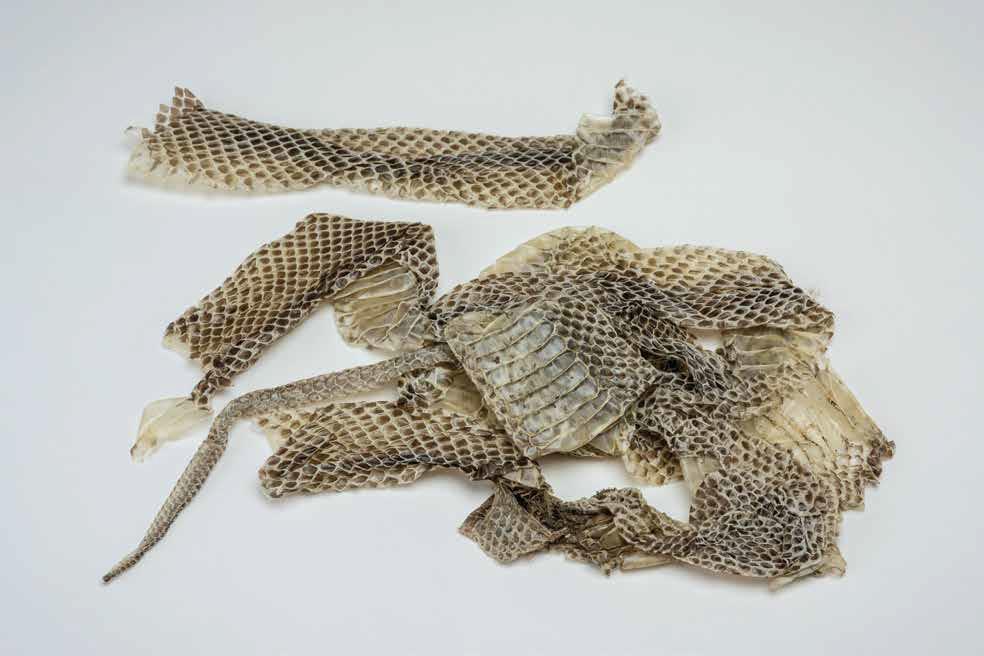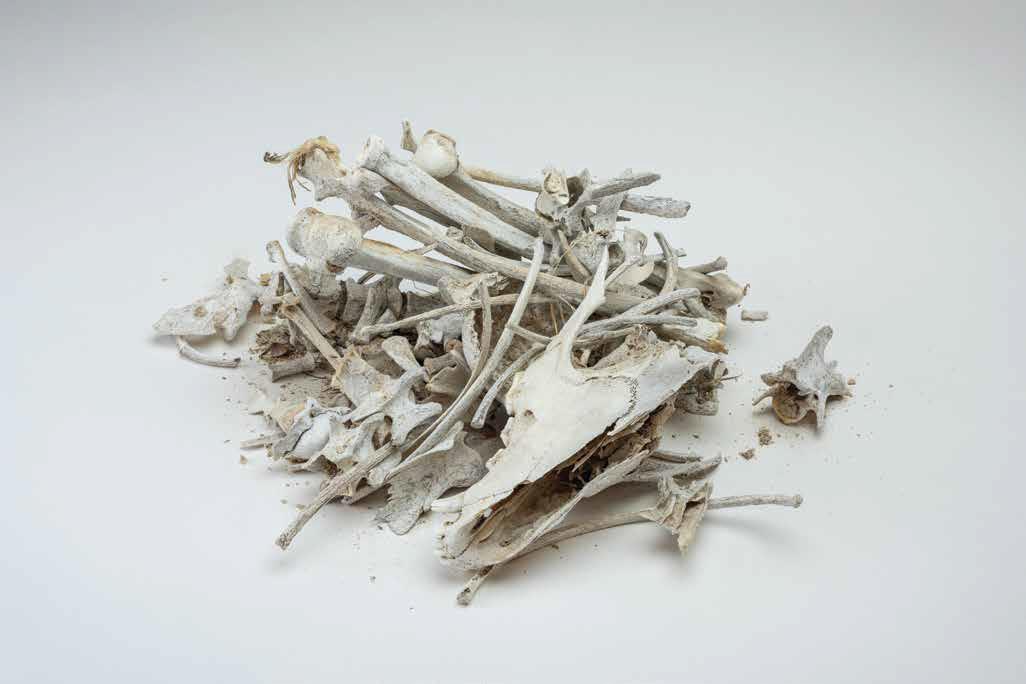
7 minute read
West is Among the Best for Culture and Shopping-andDining Delights
West is Among the Best for Culture and Shopping-and-Dining Delights
by Michael H. Price A As long as we’re “out where the West begins,” as an iconic figure in Fort Worth’s history described this Cowtown, then we might as well look even further westward within the city itself. Pioneering publisher and civic booster Amon Carter may have intended to give Dallas the razz when he coined that phrase — but the West hardly could have picked a keener starting point than Fort Worth.
And Fort Worth, in turn, hardly could have picked a site more right for its burgeoning west side Cultural District. Rippling with heavy-duty commercial, artistic and residential growth since the dawn of the 21st century, the west side overall has seen its very skyline change with the transformation of a busy West Seventh Street into a streamlined conduit connecting the downtown area’s Sundance Square development with the Cultural District. Heading west (naturally) from downtown Fort Worth, one finds the Cultural District radiating from the intersection where Seventh Street crosses University Drive and, in the process, morphs into the historic, brick-paved Camp Bowie Boulevard. Visitors in search of western-style discoveries — from plain-and-fancy dining to fine art and varied entertainment — will find such delights in volume on the west side. Cultural attractions, restaurants, mainstream and special-interest shopping, and lavish natural gardens flourish as a reminder of how Fort Worth has built upon its frontier origins. Several of the world’s finer museums, playhouses and galleries anchor a vast Cultural District. The hand-laid red-brick pavement of Camp Bowie Boulevard is an attraction in itself, lined with an everexpanding array of art galleries, stage-andscreen auditoriums, boutiques, scholarly museums, restaurants and lounges, and shopping malls. The Cultural District The Fort Worth Museum of Science & Historycommands the westward view of the district from Montgomery Street, and just northward are additional cultural touchstones: Designed by renowned architect Philip Johnson, the Amon Carter Museum of American Art houses a definitive collection of American paintings, photography, and sculpture. The collection spans early nineteenth-century art to mid-twentieth century modernism. It is also home to nearly 400 works by Frederic Remington and Charles M. Russell. Nearby is the Kimbell Art Museum still living up to Newsweek’s description as “arguably the most beautiful museum in America” including its new Renzo Piano Pavilion addition. The neighboring Modern Art Museum of Fort Worth is the oldest such museum in Texas — housed in a workof-art 2002 building designed by worldrenowned Japanese architect, Tadao Ando, and featuring bold gallery exhibitions, concert attractions and, every weekend, leading-edge independent-studio films.
The Museum of Science & History, anchoring a campus within the Cultural District, has been designed by similarly renowned architects Ricardo and Victor Legorreta. Inside the Museum of Science & History, one finds vast galleries of Texas-bred dinosaur specimens and the state’s oil-and-gas heritage, in addition to the Cattle Raisers Museum, the Fort Worth Children’s Museum, Stars Café, and a new digital Noble Planetarium. The Omni Theater, an IMAX® superscreen dome, links with the Museum of Science & History and boasts a new digital sound system and enhanced lighting. The National Cowgirl Museum & Hall of Fame is next door to the FWMS&H. The NCM&HF honors women of the American West from
cartermuseum.org/ markdion


#DionAdventures
i Bridal Registry q Unique Gifts w Italian Pottery t Scent Boutique o Custom Upholstery


DOMAIN X C I V 3100 W. 7th Street Suite 112 Fort Worth, TX 76107 (next to Eddie V’s Restaurant) 10 a.m.-6 p.m. Monday-Saturday 817-336-1994 www.domainxciv.com
those who lived and worked on ranches or who led an expedition, or sat before an easel, aimed a rifle and hit the bull’s eye, or sat on the Supreme Court.
When the museum meanderings trigger an appetite for fine dining, two long-established, museum-based cafés stand ready to serve. The Kimbell Buffet Restaurant offers indoor or patio lunch and a light evening menu within one of the most beautiful modern buildings in America. The Modern Art Museum’s 250-seat Café Modern, with an outdoor terrace, overlooks a serene reflecting pond. The Modern’s full-service kitchen delivers superb cuisine for lunch, Sunday brunch, and scheduled seasonal dinners. The Great Outdoors offers breakfast subs, lunch and dinner subs, soups, salads and all natural ice cream. Off University on White Settlement Road, a Texas barbecue tradition reigns at Angelo’s, offering a half-century of first-class BBQ and ultra-chilled beer. The Fort Worth Community Art Center, at the district’s western edge, showcases work by the city’s homegrown community of artists, in addition to live-theater venues.
Neighboring the museum community is the city’s landmark Will Rogers Memorial Center, a versatile 85-acre entertainment complex — with 45 acres housing the Will Rogers Coliseum & Auditorium. Its majestic Pioneer Tower dates from the Texas Centennial Celebration of 1936. Still the most imposing site within the district, the coliseum holds pride of place as the first domed structure of its kind in the world. The complex also boasts an equestrian center and exhibit halls, home to the annual Fort Worth Stock Show and Rodeo.

Showplaces of Heritage and Artistry and Nature
Shoppers can find a broad selection of merchandise in the Cultural District’s specialty shops. European antiques and upholstery can be found at Domain XCIV and the dh collection boasts progressive furniture designs in an appetite-whetting environment. Southward off University Drive, visitors can experience the glories of nature at Trinity Park, a pristine oasis bordered by a fork of the placid Trinity River. Here, picnickers, joggers, and strollers can explore meandering pathways or travel on a miniature railroad. Opposite the park, across University Drive, Fort Worth’s Botanic Garden beckons — the oldest such site in Texas, a lush 109-acre tapestry of dappled shade accented by vibrant splashes of color. The Garden is home to thousands of species of native and exotic plants in 21 specialty gardens. The European-designed Rose Garden features more than 3,400 roses, and the 10,000-square-foot Conservatory houses tropical flowers and foliage from around the world. An on-site Gardens Restaurant serves light lunches and refreshments — with a view of the Garden and a varied gallery that often displays the work of local artists. Adjacent to the Botanic Garden is the Botanical Research Institute of Texas (BRIT) whose mission is to “reduce its footprint on the natural world as well as protect and restore ecosystem services.” BRIT’s building was designed as an example of how much of this can be accomplished. A short distance southward lies the illustrious Fort Worth Zoo, nationally ranked among the finest. The Zoo is home to thousands of animals, both native and exotic. Viewing facilities and natural habitat exhibits are set up for optimal views of the animals, often separated from their observers by only a river, a waterfall, or a large window. Shaded rest spots and picnic tables are available, with several on-site eateries. Across from the Zoo, Log Cabin Village offers another view of the city’s rich frontier history boasting seven authentic log homes, dating from the mid-to-late 1800s. Perioddressed interpreters greet visitors inside each cabin offering a living history of the home and its origin.
The mood to explore might be triggered by art, dining, shopping, or the wonders of nature. Fort Worth’s west side meets all these interests and then some!
NOW SHOWING IN THE OMNI THEATER! fortworthmuseum.com





MARK BRADFORD END PAPERS

MODERN ART MUSEUM OF FORT WORTH March 8–August 9 www.themodern.org
Lead exhibition support is generously provided by the Texas Commission on the Arts. Major support is provided by Hauser & Wirth and the Fort Worth Tourism Public Improvement District, with additional support from Suzanne MacFayden. Pictured: Juice, 2003 (detail). Mixed media on canvas. 72 × 84 inches. Private Collection. © Mark Bradford. Photo: Charles White






